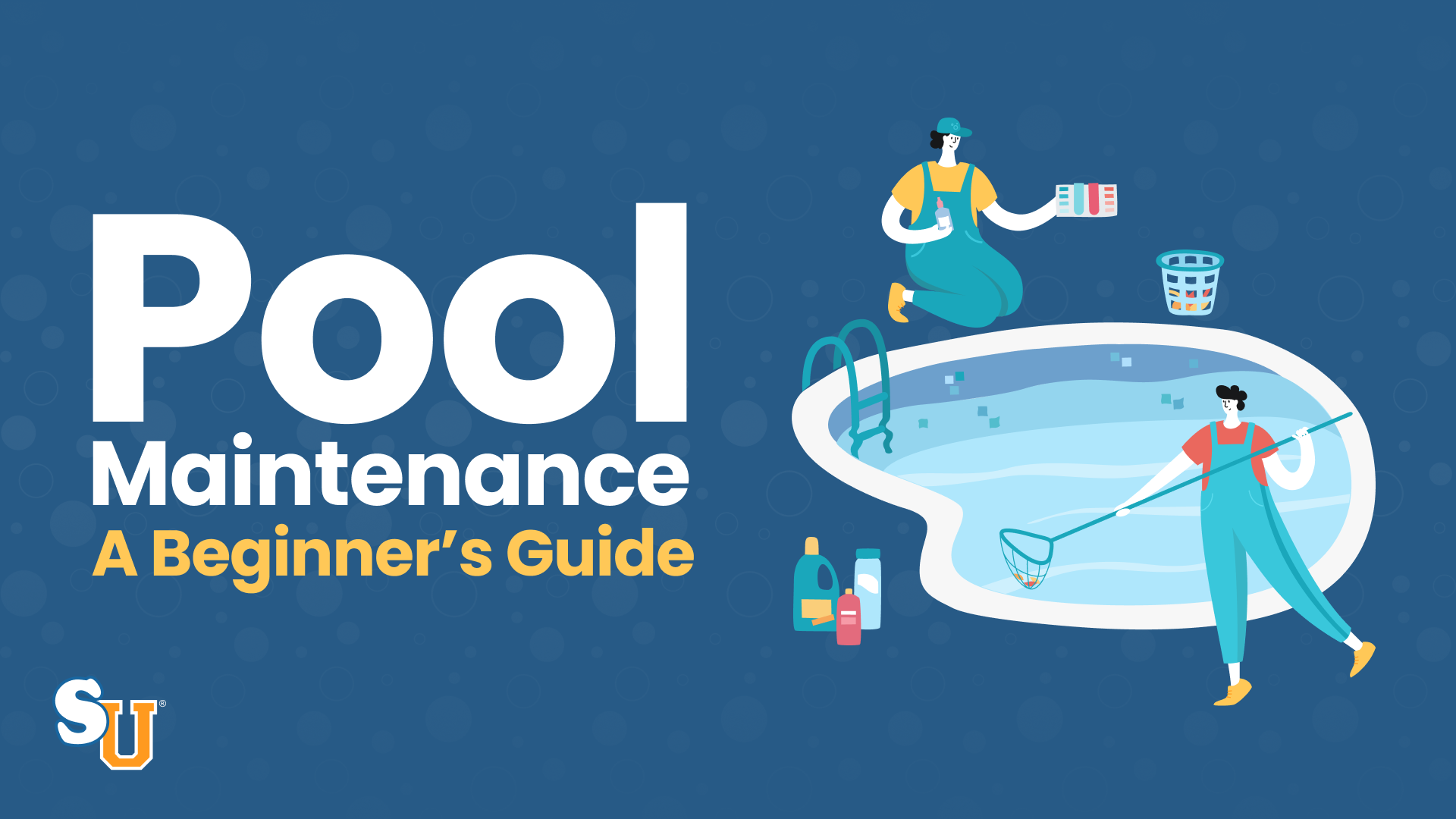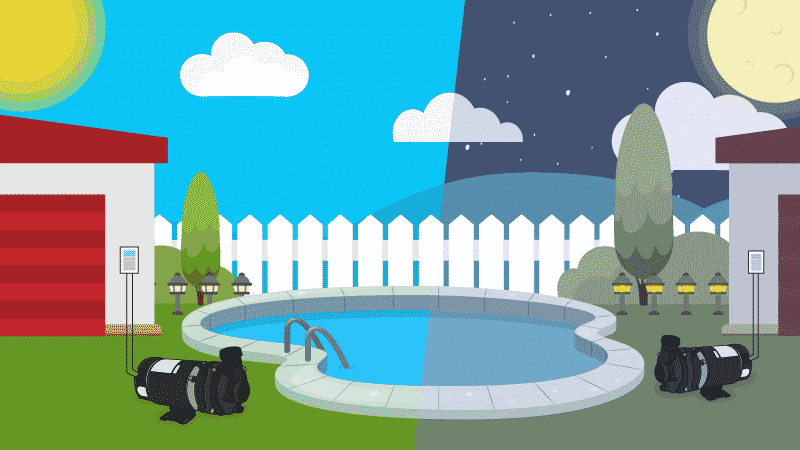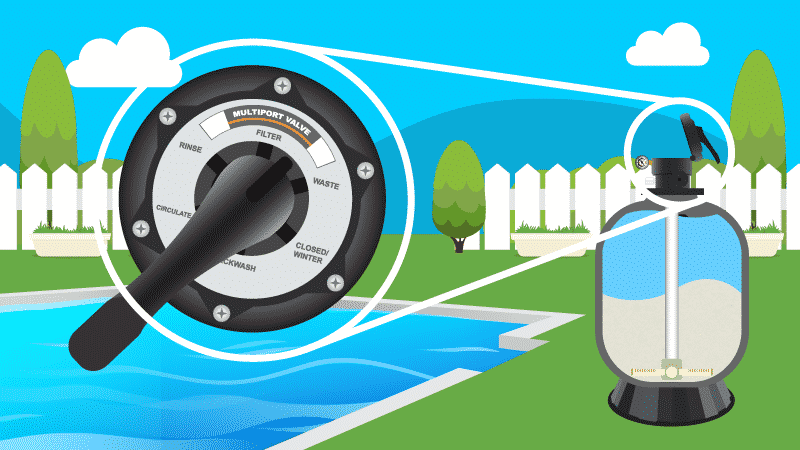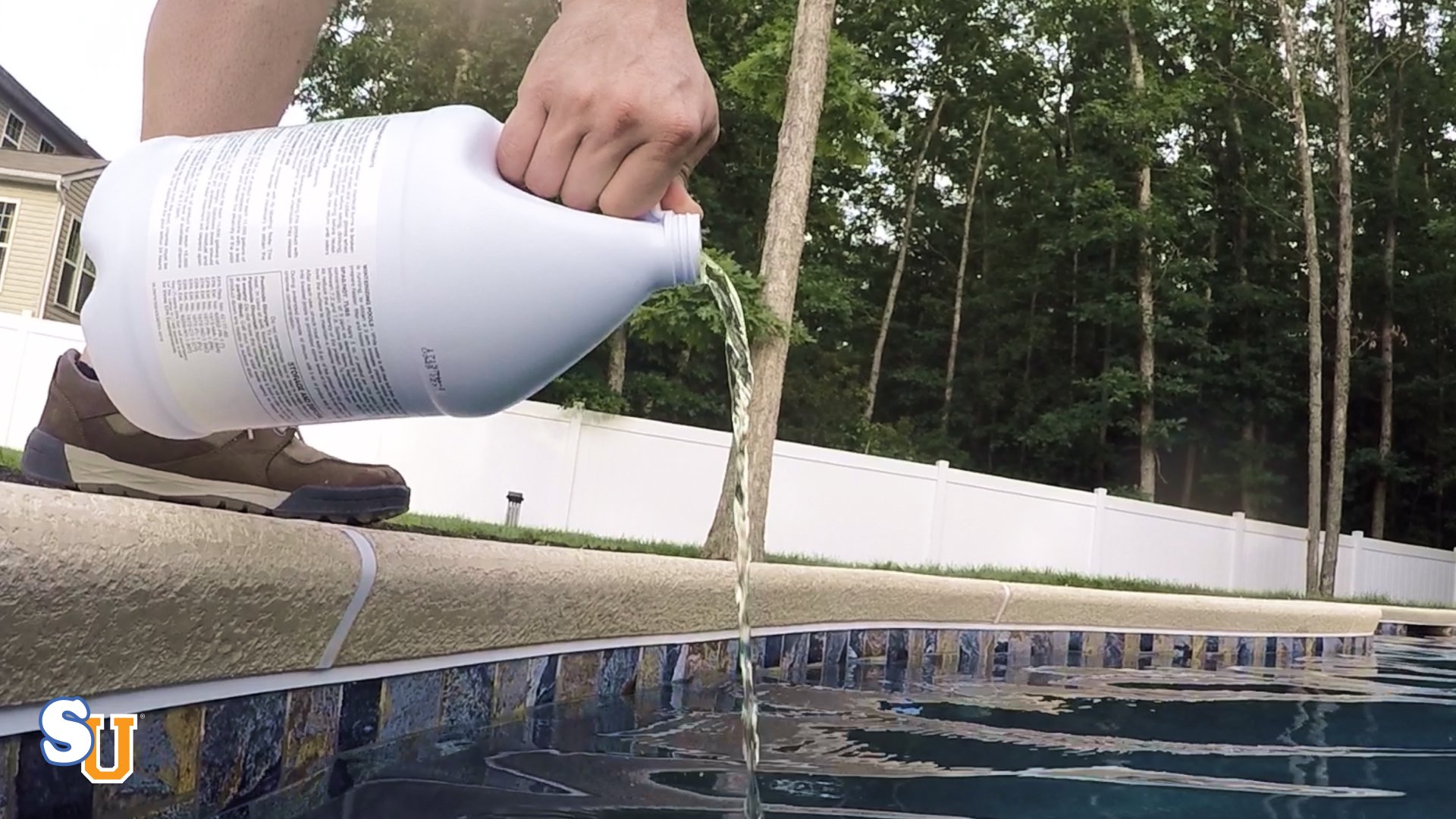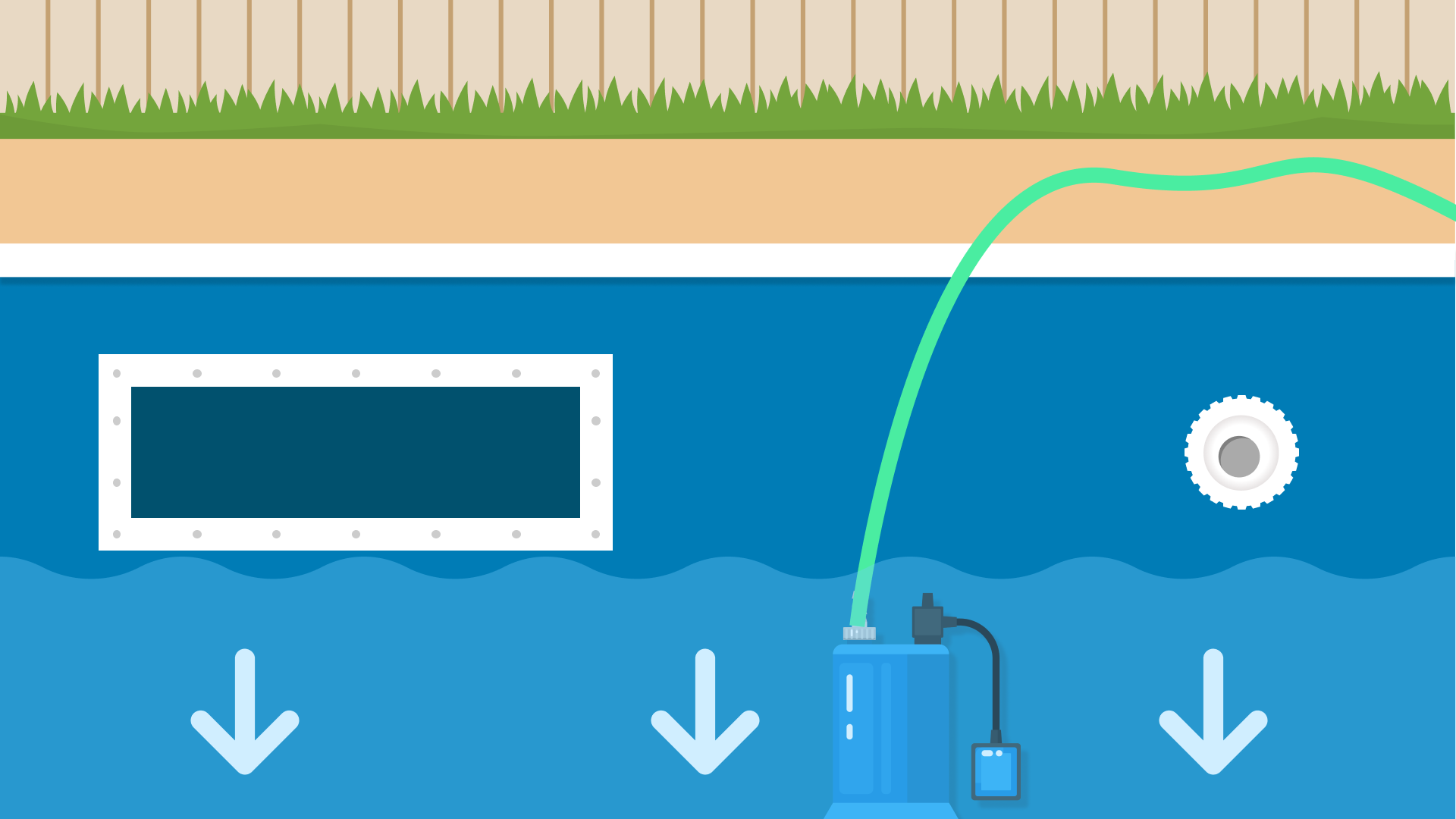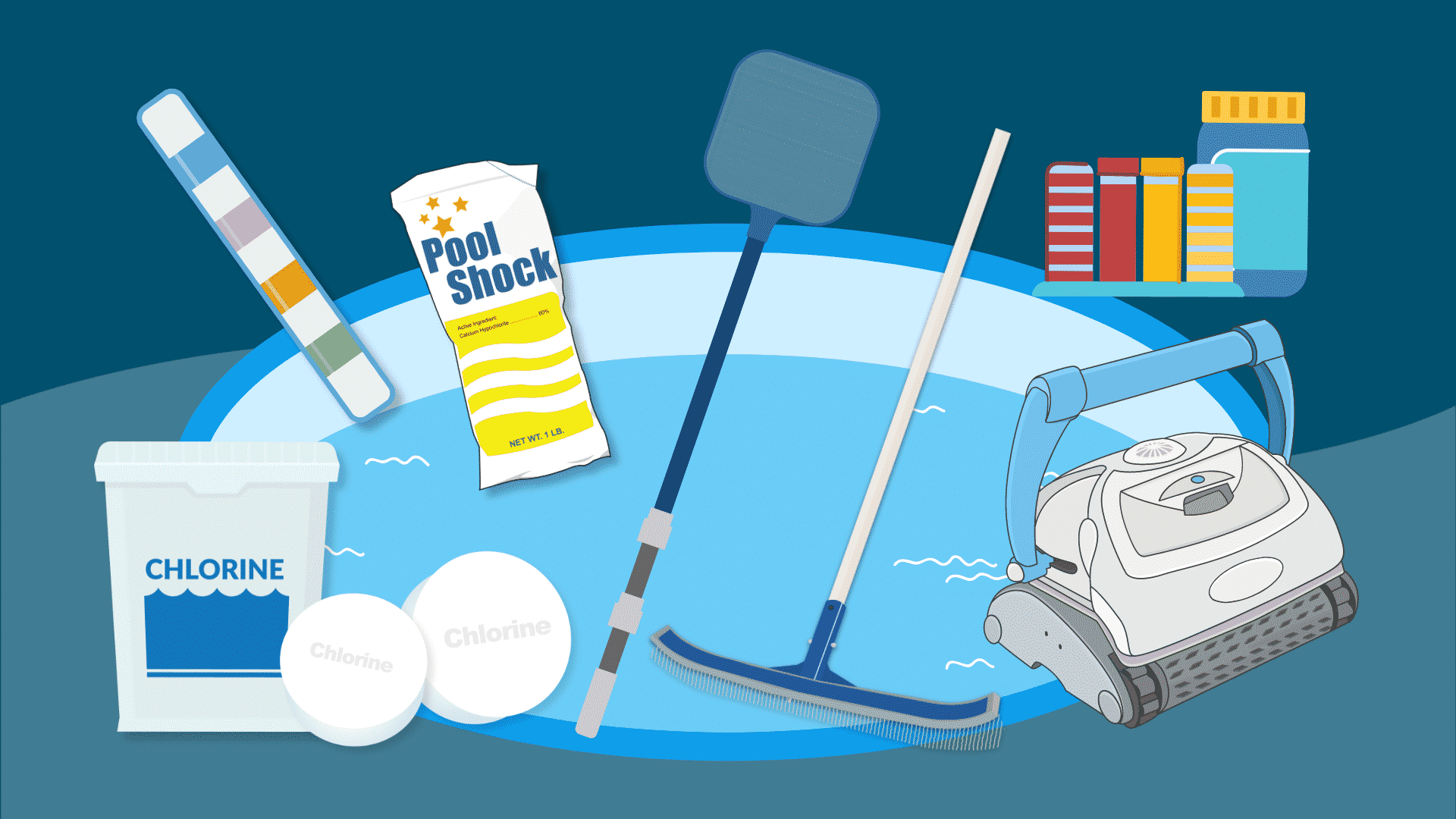How to Drain Water Out of Your Pool (FAST)
There are four ways to drain water out of your pool: with your filter waste port, your pump’s hose bib, a sump pump, or a garden hose. But the one that’s best for your pool depends on your filter system and how much water you need to drain. So here’s a quick guide on how to drain water out of your pool.
1. Drain a Pool With The Filter Waste Port
The first method, and one of the fastest ways to drain water out of your pool, is by using your filter’s waste port. If you have a sand filter or a D.E. filter, you can connect a backwash hose to your filter’s waste port and use this to siphon water out of your pool.
Turn off your pump, connect a backwash hose to the waste port, set your filter to waste, and turn the pump back on. Water will start flowing from your pool, through the skimmers and pump, and out the backwash hose. Just be sure to watch out for the water level in your pool.
Once the water drops below the skimmer, your pump will start sucking in air. So, this method only works for draining the few inches of water that’s at or above your skimmer line. The next method is similar but doesn’t use your filter.
2. Drain a Pool With The Pump’s Hose Bib
If you have an inground pool, you should see a hose bib built into the plumbing near your pool pump. To drain water from your pool, shut off your pump, attach a garden hose to the hose bib, turn on your pump, and open the valve.
Like the backwash method, you’ll need to watch your water level so it doesn’t drop below the skimmer line. It will also take longer to drain since you’re using a smaller garden hose compared to a larger backwash hose.
But what if you need to remove more water from your pool or you don’t want to put any strain on your pump and filter? That’s where a sump pump comes in.
3. Drain a Pool With a Submersible Pump (Best Method)
A submersible pump, a.k.a. a sump pump, is designed specifically to be used underwater. This will quickly remove the pool water, including anything below the skimmer. Simply connect a hose to the sump pump and place the pump at the bottom of your pool.
Plug in the sump pump, and it will start pulling water out of the pool through the hose. Some sump pumps will let you connect a larger backwash hose, which will help pump out the water even faster.
4. Drain a Pool With Gravity (Easiest Method)
Finally, if you want gravity to do the work for you, use the garden hose siphon method. This will take the longest to drain, but it’s the most hands-free. Submerge a garden hose underwater in your pool, making sure the entire hose fills with water.
Then, keeping one end of a garden hose in the pool, place the other end downhill outside of your pool. If you’re unsure how to get the siphon flowing, check out our other video for a walkthrough.
Where Should You Drain The Pool Water?
You’ll want to drain any pool water directly into one of your home’s sewer cleanouts, not into a storm drain.
You can also direct the water into your yard, but that can damage your lawn if it’s full of chemicals or you’re dealing with a high volume of water. Always check with your local municipality for any draining regulations.
A Quick Warning About Completely Draining Your Pool
If you have an inground pool and you completely drain it, you run the risk of the entire pool popping out of place. Without the weight of the water pressing on it, the pool can get pushed up and out of the ground.
The risk is even higher if you live in an area with a high water table or drain your pool after several days of heavy rain. If you have an above-ground pool and drain out all of the water, your walls could collapse.
So consider partially draining your pool and replacing it with fresh water in batches. If you do have to drain your pool completely, say, to make repairs, it might be worth hiring a professional.
4 Steps to Take Before You Drain Your Pool
Taking a few precautions is a key part of how to drain a pool.
1. Have a Water Disposal Plan
Know where you’re going to direct all that pool water before you start pulling it out. Some municipalities prohibit draining pool water into streets or storm drains. And thousands of gallons of water is probably going to be too much for your yard to handle. You don’t want all those chemicals in your grass or the groundwater, anyway.
The usual process is to direct all that water down one of your home’s sewer cleanouts, but some areas may allow you to drain into the street. Your city may also have restrictions on when you can drain your pool. Always check with your local water authority to be sure.
Having a water disposal plan in place before you begin the draining process can help you avoid fines and environmental damage.
2. Allow Pool Chemicals to Dissipate
Regardless of where you’re going to dispose of the pool water, it’s best—and in most cities, required—to ensure the water does not have high levels of pool chemicals. It should be chlorine neutral, have a neutral pH, and not contain any additional chemicals you may use. Contact your local water authority for the required chemical levels where you live.
To reduce levels, stop adding chemicals and test the water until the water reaches the necessary chemical levels. If you need to drain the pool sooner (for an urgent repair, for example), you can use a chlorine neutralizer to speed up the process.
3. Turn Off Automatic Timers
If any of your pool equipment runs on an automatic timer, turn them off prior to draining so nothing turns on during the draining process.
This is important for your pool lights. They’re meant to work underwater and are water-cooled devices. When they’re not covered with water, they can quickly overheat and shatter.
Turning off timers is especially important for the pump, which is also water-cooled.
Important: Do not allow the pump to come on while you’re draining the pool. If it turns on after the water level has fallen below the skimmer, the pump can take on air, which can damage it.
4. Wait for the Right Weather
You might think a bright, sunny day is the perfect time to drain your pool. And it is—as long as it’s not too hot out.
Pools are meant to be full of water. When they’re drained, and the liner is dry and exposed to high heat, it’s vulnerable and can easily be damaged by the sun. An inground pool can even blister and crack if left dry in high temperatures.
To avoid this, drain your pool when the outside temperature is 85°F (29°C) or lower. If your pool needs to be drained, but you’re into the middle of summer when temperatures are going to remain high (especially if you live in a warmer climate), wait until autumn or even winter if that season is mild enough where you live.
How Much Does it Cost to Drain a Pool?
In the United States, one person uses approximately 80 to 100 gallons (303 to 379 liters) of water per day. A large pool can hold 18,000 to 20,000 gallons ( to ) of water. The month you choose to drain and refill your pool, expect a hefty water bill.
Knowing how many gallons of water you’ll need to fill your pool can help you be better prepared. To do this, you need to know your pool volume. Our pool calculator can easily help you figure this out.
 Rectangle
Rectangle
 Round
Round
Whether you’re draining or refilling your pool, you don’t want to leave it unattended. Choose a day when you have no other obligations so you can stay near the pool as it empties or fills. Both tasks will take several hours of valuable time.
The time it takes to drain your pool will depend on its size and how many gallons per minute the pump can move. But you’re probably looking at somewhere between 8 and 14 hours for your pool to empty.
The same goes for filling it. The main factors are the size of your pool, how many hoses you use, and your water pressure.
The average outdoor spigot in a home will produce roughly 4 to 12 gallons per minute. Filling a small pool could take just a few hours, while a large one might take 14 hours. A pool fill time calculator can give you an idea of how long it will take.
3 Ways We Can Help With Your Pool
- The Pool Care Handbook: An illustrated guide to DIY pool care, including water chemistry, maintenance, troubleshooting, and more.
- The Pool Care Video Course: You’ll get 30+ step-by-step videos and a downloadable guide with everything you need to know about pool maintenance.
- The Pool Care App: Enter your water test results. Get a custom treatment plan. Know exactly what chemicals to add to keep your pool clear.






